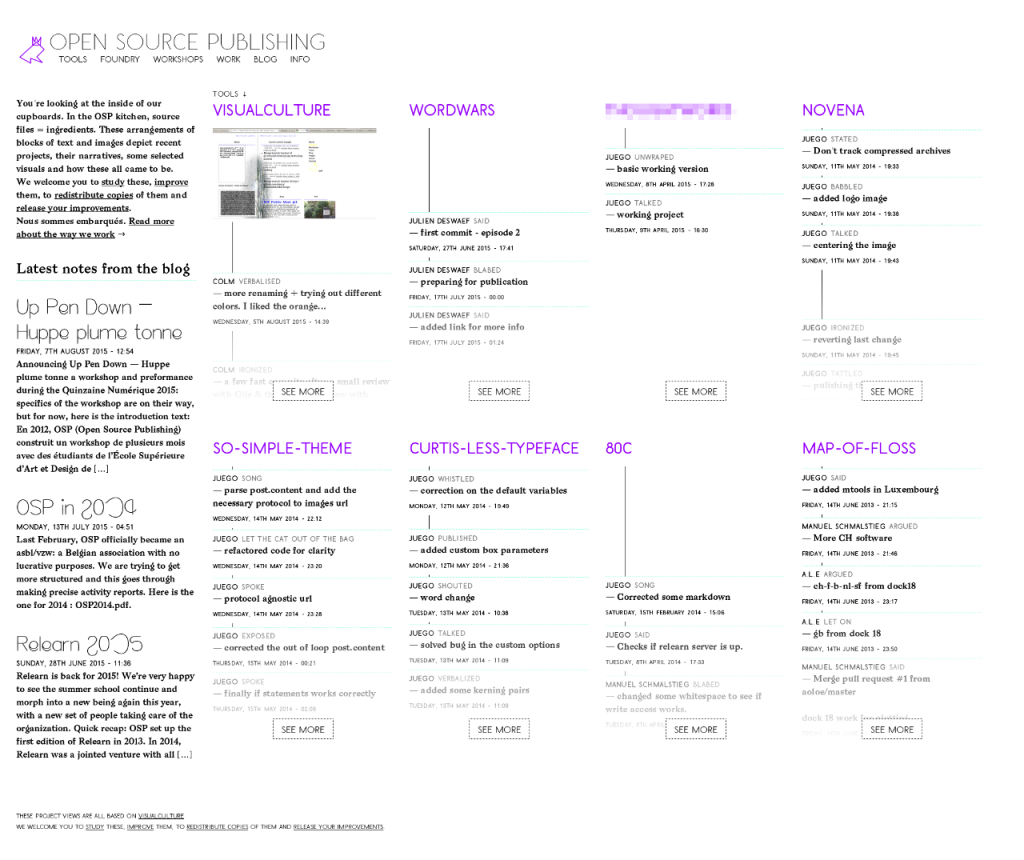TL;DR: Tools I will not review and why.
Three weeks ago, I started a series of publications regarding tools that encourage collaborative practices for designers and that use some form of versioning at their core. You can read the previous chapters and especially the first one to understand what I’m looking for (links to part 2 and part 3). In this fourth episode, I’m just going to list tools I will not review thoroughly but that I felt I should mention because they exist (or existed) for certain reasons. If you have experience with some of them, I’d certainly be happy to hear about it.
Perforce
Used by blockbuster media companies (such as Rockstar Games or Disney, for example), it’s a complete project, team, assets, source control management solution aimed at very large studios with hundreds or thousands employees and its apparently great at handling large (sets of) media files (at least, that’s how it was once presented to me). The licensing fee are relative to that description. It’s worth noting that the latest presentation of Perforce Helix mentions the integration of Git for the developers in the team. Maybe worth watching is this video showing how to handle their image diff tool.
https://www.youtube.com/watch?v=ye_vM0rD_64
Layervault
Although, like Pixelapse, I had them on my watch list, I never took the time to dig deep into their product. And unfortunately, as I understand it from the description on their website, the company went bankrupt 6 months ago. Too bad, when you see Kelly Sutton present their product just 2 years ago, it looked very interesting. Their “wormhole” tool (at 6:00) is really a nice approach to get “what changed and when” in an image.
InVision
I hesitated for a while. Should I review this tool or not. They call themselves “The world’s leading prototyping, collaboration & workflow platform“, and looking at their client portfolio, they surely can pretend to this, I guess. But they focus mainly on screen based media and interactivity, or so it seems. and their level of version control is no better than Dropbox or similar. So the designers targeted here are “application” designers, UX/UI designers,… and I’m looking for a a less opinionated tool. Anyway. If you want to get a quick glance at what this tool does, here’s a quick introductory video. Certainly a great tool to review designs, manage projects & teams and test user experience. Not what I’m looking for atm.
https://www.youtube.com/watch?v=qpTNy-hu3pg
Visual Culture
Visual Culture is a server software developed by Open Source Publishing to visualize git repositories. Since their design practice involves doing things open and in the open, their website runs on it and allows the visitor to browse into their latest projects and how those are made. Their intention was to turn it into a general tool for designers and they opened a crowdfunding campaign to achieve that goal, but this did not received enough support. I did try to install it and see how I could use it on my own projects. With the help from Colm, Stéphanie and Eric, I passed through a couple of bugs and misunderstandings on my part. And I could see a recap’ page of what I had in my folders. Unfortunately, that’s how far I managed to go. I lack some Django knowledge to adapt the necessary bits so it would behave nicely with my projects as, at this stage, Visual Culture is still very closely knitted to (how) OSP(‘s) work.
Come back next week for another chapter.
